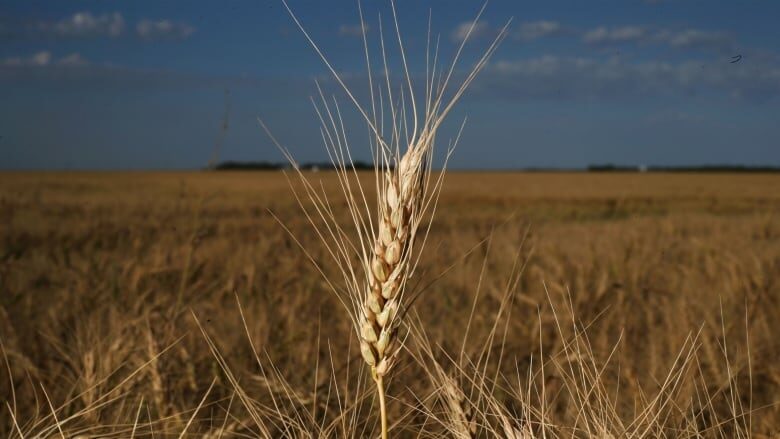
Now that harvest season has arrived and they need dry weather, the sky has brought forth showers.
"(Crops) are considerably less than what they would be on a normal year," Christi Friesen, who has a grain farm near Peace River, Alta., told CBC's Edmonton AM on Wednesday.
Friesen grows canola, barley, oats and wheat. Because of the drought that persisted through the summer, some of her crops yielded less than 25 per cent of normal, she said.
Barley, for example, normally comes in at more than 100 bushels per acre. "We're lucky to hit 30 this year," she said.
The late-season rain, meanwhile, leaves wet crops that interfere with the combines and halts harvesting work.
Friesen said they have harvested half of their crops, but more rain is in the forecast.
Delays in the harvest lead to a threat of snow — and snow can cause a crop to be downgraded, she said.
With the current prices of grains, farmers can't afford a downgraded yield, she said.
According to the Alberta Canola Producers Commission, the price of canola has nearly tripled in the past few months, going as high as $27 a bushel compared to the average of $10.
"That's what, you know, helps you pay the bills and gets you so that you can farm all over again next year.
She said a lot of farmers, like her, will rely on crop insurance that would help cover their losses.
In July, the province announced they were working on an AgriRecovery program for farmers that will provide emergency support in case of natural disaster, such as this summer's drought.
The federal government is expected to take on 60 per cent of the cost.
When it comes to weather, Friesen said the thing that could really help farmers right now is some frost, which dries down crops and quickens the final stages of growth.
"We're at the point where a nice killing frost would actually just help us finish maturing all the crops," she said.



Reader Comments
to our Newsletter